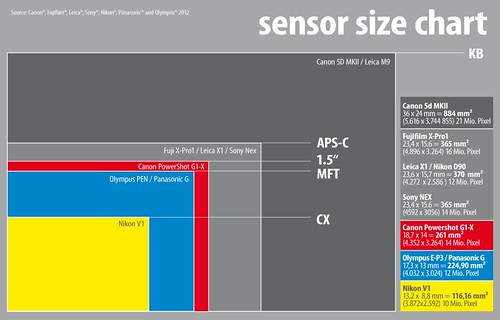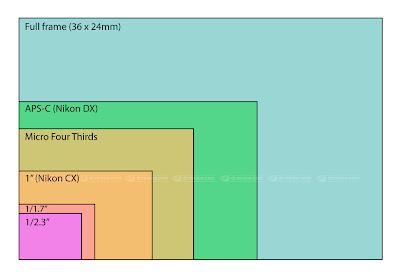M
meland
Guest
Thanks for the technical lesson. And for telling me I am naively short sighted.T3 wrote:
You're being naively short-sighted. When the next generation of photographers starts buying their system cameras, mirrorless cameras may very well be a serious alternative to DSLRs. And when those buyers looks across the mirrorless camera system market, they'll see Sony, Canon, and Samsung with APS-C mirrorless systems, Panasonic and Olympus with m4/3 sensors, and finally Nikon with a tiny 1" sensor. Do you honestly think that Nikon will be on equal ground against these systems that all use much larger sensors? Are you honestly naive enough to think that these other systems won't tout their much larger sensors as being a strong selling point against Nikon's small 1" sensor? You don't think that Nikon's competitors will show diagrams like this (below), pointing out just how small the CX format is, compared to their own larger sensors?meland wrote:
You are speaking from the perspective of an enthusiast. Which is fine of course but not really representative of the larger buying public. Additionally many of the purchasers of such cameras aren't buying a system. The manufacturers would love them to be buying a system but unfortunately most are sold with one standard zoom lens and most remain with that one standard zoom lens. I would suggest the Nikon 1's failure (allegedly) is that its lenses are not really compact enough to make it more attractive to the kind of buyer that already finds DSLRs too large. The sensor size, other than to people like you and me, is almost incidental.



Yep, Nikon's 1" sensor really is that small compared to m4/3 and APS-C. And you can bet that Nikon's competitors will want to point that out to consumers every chance they get!
The problem with your thinking is that you're not looking long-term, a few years down the road, when mirrorless systems will be much more mature, and be serious alternatives to today's DSLR cameras. Sensor size will definitely be a selling point. And you can bet companies like Canon and Sony will tout the APS-C sensors in their mirrorless systems as being the best option for users who would have otherwise bought an APS-C DSLR!
The point though is that you are only thinking in terms of what we have now in terms of technology and still from the viewpoint of a photo enthusiast.
Thinking long term (and I certainly don't claim to be a genius or have powers of foresight) the general public are and still will be more than happy with products that produce sharp results and that are easy to use. You, me and other enthusiasts may want large sensors that require lenses that at large apertures give a depth of field that just covers one eye but Joe Public isn't interested in that. What he wants is a camera that gets everything in focus, from front to back, no messing. And he wants cameras that are small. Now you diagrams illustrate very well why the larger sensors are always going to require big bodies to mount them in and why the corresponding lenses are going to be larger as well.
So this rush to larger sensors is a great thing for us enthusiasts but ultimately pointless for non enthusiasts even if it is used as a marketing ploy in the short term.
